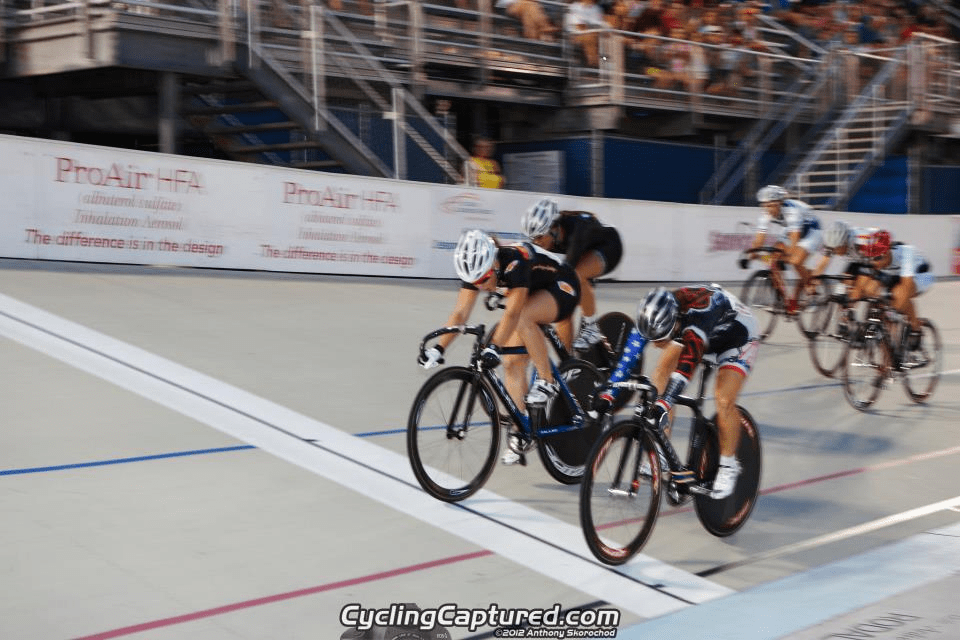By Colleen Gulick
Colleen earned her MS in exercise physiology, BS in bioengineering, and is a Certified Strength & Conditioning Specialist. Outside of academia, Colleen is a professional cyclist and a two-time national track record holder and three-time national track cycling champion. She is also a former, two-time NCAA D1 field hockey national champion & All-American. Before consulting with Cercacor, she was (and continues to be) an active Ember user. You can contact Colleen at [email protected].

How much training is too much? Where is the line that differentiates training hard and overtraining? One of the challenges in knowing when an athlete crosses that line is identifying a number or marker as a precursor to overtraining. Lehmann et al define overtraining as an imbalance between stress and recovery [1,2].
As athletes, we can monitor our training with countless forms of technology to measure: power, acceleration, heart / pulse rate, hemoglobin, heart rate variability, resting heart rate, and more. However, which of these indices has the capability of acting as the much-needed canary for our overtraining mine shaft?
Overtraining is currently diagnosed by decreases in performance coupled with chronic fatigue [1,3,4]. The signs and symptoms associated with overtraining (syndrome) depend on the individual, but some include: decreased attention span, mood swings, and decreased immune function (specifically increased respiratory infections). One of the challenges with assessing a state of overtraining is that the level of decreased performance needed to signal and diagnose overtraining is unknown.
Of course it is most advantageous to identify precursors so we can focus on preventing versus diagnosing.

There is currently no magic measurement that can conclusively identify when you are beginning to overtrain. However, researchers have identified a few promising markers: resting heart rate, oxygen consumption in submaximal exercise, hemoglobin, sleep disturbances, and glucose levels [1,5,6,7,8,9]. Because human physiology is incredibly complex, it is important to rely on more than just one marker when attempting to prevent overtraining syndrome.
The Ember device’s “daily range” graph is a good example of how to simultaneously monitor two markers of overtraining. The graph displays morning resting heart rate as well as hemoglobin. Thus, an overnight dramatic increase in heart rate and a decrease in hemoglobin (as compared to individual baseline numbers) might indicate that the body is not fully recovered. If such changes occur, the athlete should consider strategically adapting that next day’s training to avoid non-functional overreaching.
In an attempt to save you from reading countless articles on the physiology of overtraining, I have assembled a bare-bones summary of each of the aforementioned potential markers of overtraining:
Resting Heart Rate: An increase in morning resting heart rate above 10 bpm is indicative of an initial stage of fatigue [1,10,11]. If you see a change this large, it would be wise to investigate some different sources of stress you are incurring (lack of sleep, emotional, training, or psychological stress) and make necessary adjustments.
Oxygen Consumption in Submaximal Exercise: In a fatigued/overreaching state, the body prefers to burn fats instead of carbohydrates for fuel [1]. Burning fats requires more oxygen than burning carbohydrates. As a result, respiratory frequency and oxygen consumption both increase.
Hemoglobin: Overtraining may be identified by a decreased hemoglobin level, since it reduces the oxygen-carrying capacity in the blood. The formation of adenosine triphosphate (ATP) then decreases, leading to a reduction in energy for muscle contractions [9,12,13].
Sleep Disturbances: This is a highly individualized marker. Some athletes have reported insomnia when fatigued, making it an easy way to identify when you are at risk of overtraining.
Glucose Levels: Decreased glucose levels can be a precursor to overtraining since muscular glycogen stores decrease after extenuated physical activity [1,9].
In an attempt to bring this article full circle and answer the initial question: “Where is the line that differentiates between hard training and overtraining?”… the answer is not black and white. It is very individualized. The best advice I (and present research) can give you is to monitor your training program. Keep tabs on your training volume as well as the above factors; so when you see the early warning signs in the form of increased resting heart rate or significantly decreased hemoglobin, you can adjust your training accordingly.
[1] Rodrigo Nascimento Alves LOPC, Dietmar Martin Samulski. Monitoring and Prevention of Overtraining in Athletes. Rev Bras Med Esporte. [Review]. 2006;12(5):262-6.
[2] Lehmann M, Foster C, Gastmann U, Keizer HA, Steinacker JM. Definition, types, symptoms, findings, underlining mechanisms, and frequency of overtraining and overtraining syndrome. In: Overload, fatigue, performance incompetence, and regeneration in sport. New York: Plenum, 1999;1-6.
[3] Budgett R. Fatigue and underperformance in athletes: the overtraining syndrome. Br J Sports Med 1998;32:107-10
[4] Hooper SJ, Mackinnon LT, Gordon RD, Bachmann AW. Hormonal responses of elite swimmers to overtraining. Med Sci Sports Exerc 1993;25:741-7.
[5] Fry RW, Morton AR, Keast D. Overtraining in athletes: an update. J Sports Med 1991;12:32-65.
[6] Hartmann U, Mester J. Training and overtraining markers in selected sport events. Med Sci Sports Exerc 2000;32:209-15.
[7] Smith LL, Tissue trauma: the underlying cause of overtraining syndrome? J Strength Cond Res 2004;18:185-93.
[8] McKenzie DC. Markers of excessive exercise. Can J Appl Physiol 1999;24:66-73.
[9] Frank B. Wyatt AD, Elise Brown. The Overtraining Syndrome: A Meta-Analytic Review. Journal of Exercise Physiology Online. 2013;16(2):12-21.
[10] Hooper SL, Mackinnon LT. Monitoring overtraining in athletes. Recommendations. Sports Med 1995;20(5):321-7.
[11] Brown RL, Frederick EC, Falsetti HL. Overtraining of athletes: a round table. Physician and Sportsmedicine 1983;11:92-110.
[12] Ganong WF. Review of Medical Physiology. (22nd Edition). San Francisco, CA: Lange Medical Books/McGraw-Hill, 2005.
[13] Mooren FC, Volker K. (Editors). Molecular and Cellular Exercise Physiology. Champaign, IL: Human Kinetics, 2005.





